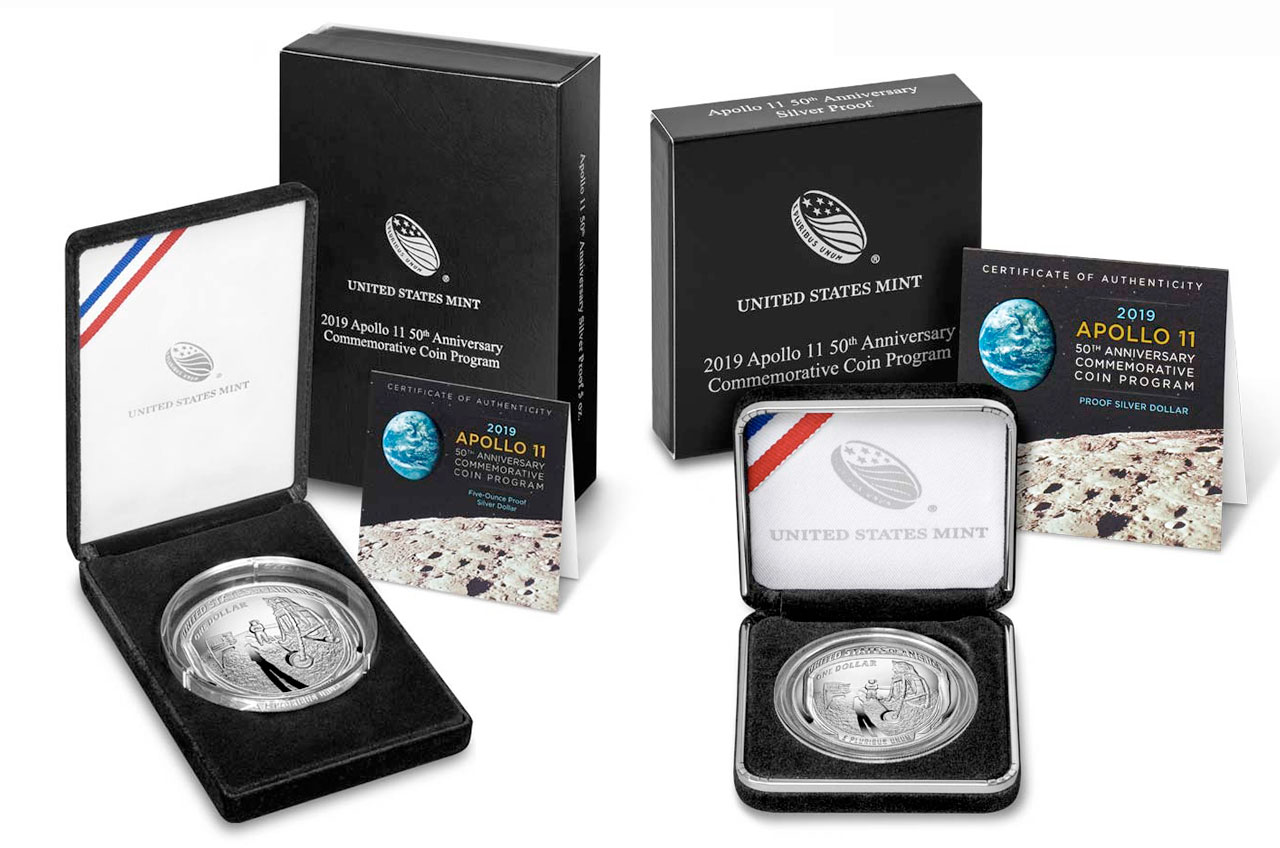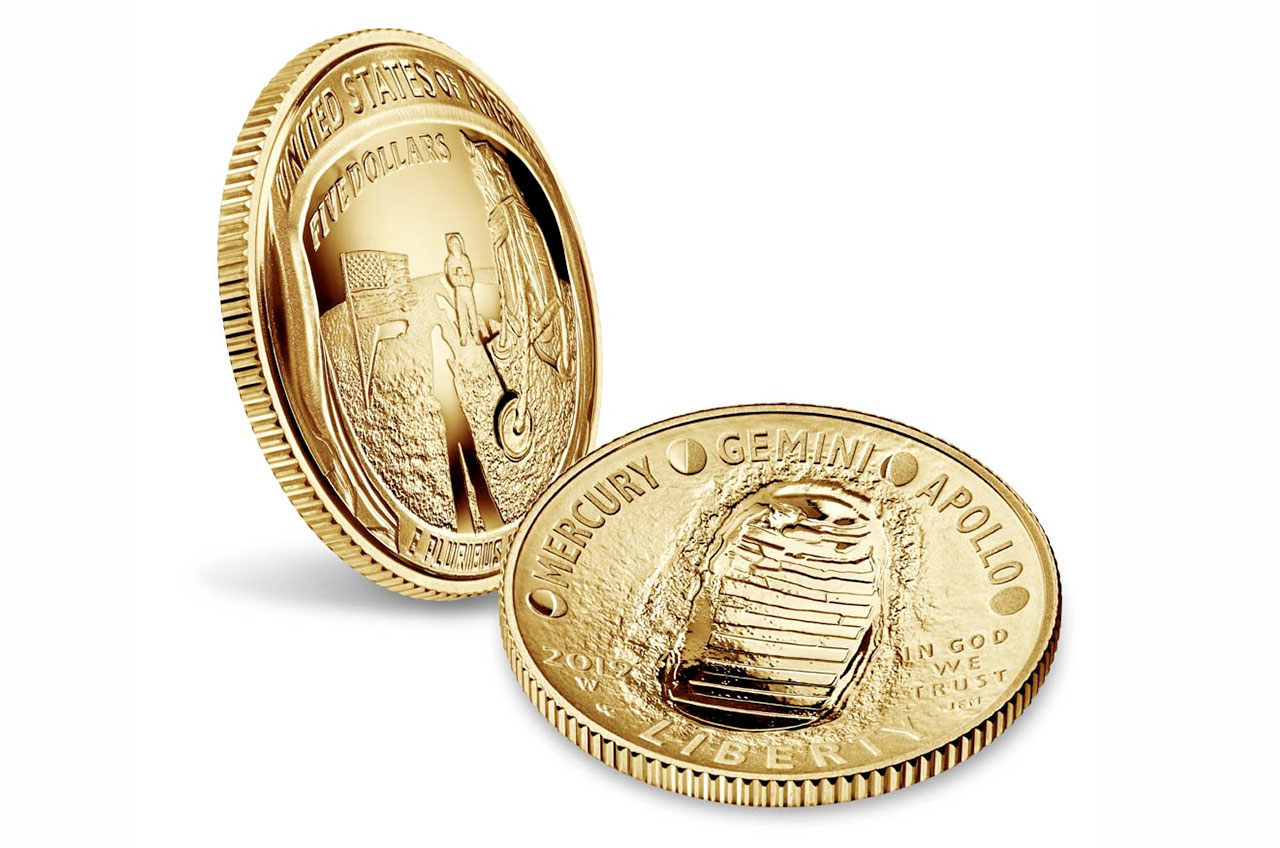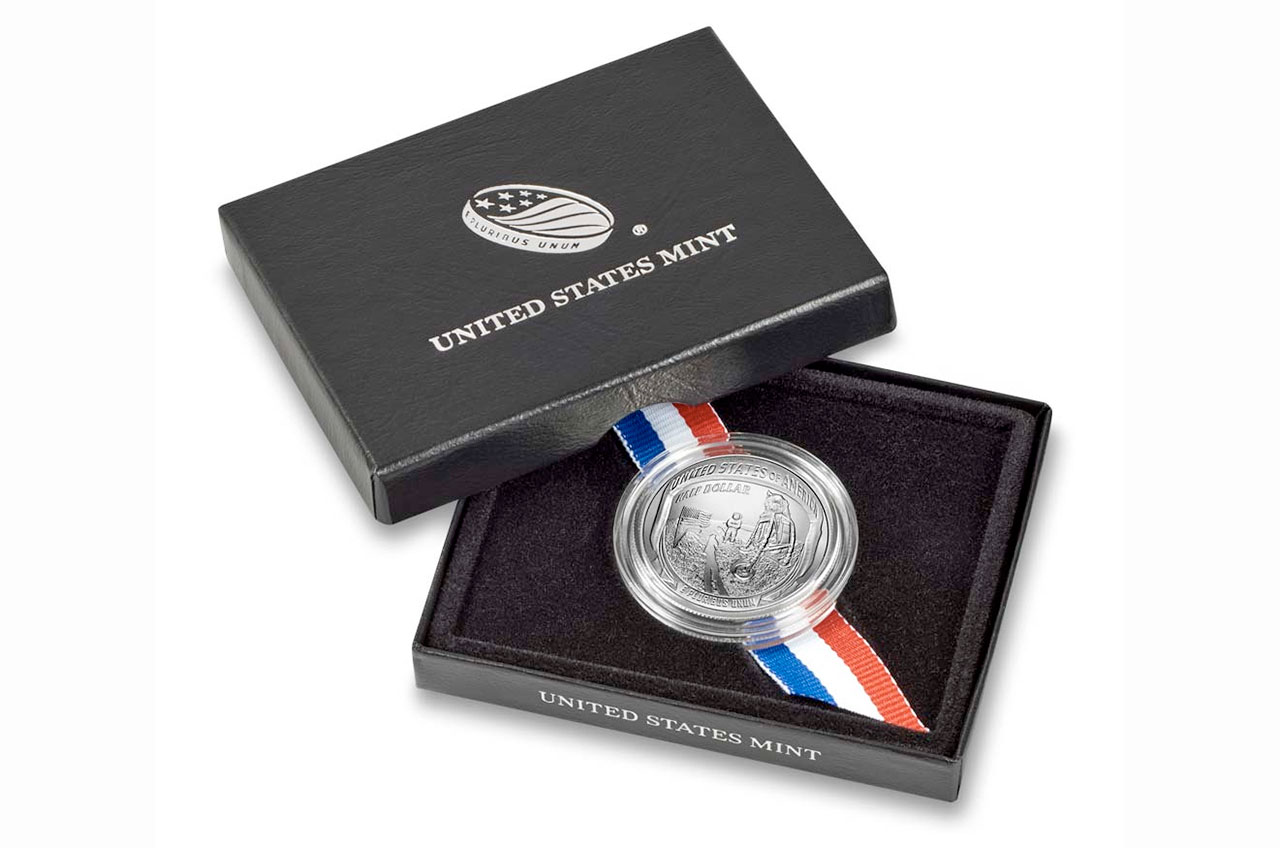After 600,000 Sold, US Mint is Concluding Sale of Apollo 11 50th Anniversary Coins

The United States Mint's mission to commemorate the first moon landing, Apollo 11, has reached its end.
The sale of the U.S. Mint's Apollo 11 50th Anniversary coins will close Friday (Dec. 27) at 11:59 p.m. EST (0459 GMT).
"Time is running out to own these stunning coins memorializing a remarkable milestone in American history," the U.S. Mint wrote to its customers, promoting its "last chance" commemorative coin sales. "The 2019 Apollo 11 50th Anniversary Commemorative Coin Program celebrates the 1969 lunar landing — one of mankind's greatest achievements — with a spectacular collection of curved coins."
Related: NASA's Historic Apollo 11 Moon Landing in Pictures
Released on Jan. 24, 2019, as authorized by Congress three years earlier, the Mint's Apollo 11 50th Anniversary coins celebrated the NASA mission that saw astronauts Neil Armstrong and Buzz Aldrin become the first people to walk on the moon. The gold, silver and clad commemoratives were only the second curved coins struck by the U.S. Mint.
"Each time a person looks at one of these [coins] it will serve as a reminder of the unprecedented engineering, scientific and political achievement that secured our country's leadership in space for generations," said U.S. Mint director David Ryder in a statement at the time of the coins' introduction.
The coins shared a common design, based on artwork produced by the Mint's in-house sculptors and the winner of a public art contest.
Get the Space.com Newsletter
Breaking space news, the latest updates on rocket launches, skywatching events and more!

The convex or tail's side of the coins resembled the outward curve of an spacesuit helmet and featured a design based on an iconic photograph of Aldrin's visor, showing the Apollo 11 lunar module "Eagle," the American flag and Armstrong on the moon's surface.
The concave or head's side curved inward to the engraved image of Aldrin's boot print in the lunar soil. The design also featured the names of the three NASA human spaceflight programs that led up to the first moon landing: Mercury, Gemini and Apollo.
As of Dec. 5, the Mint had sold nearly 600,000 of the possible 2.5 million Apollo 11 coins approved for production. Based on sales data provided by the U.S. Mint, the most popular coin in the Apollo 11 program was the proof-quality silver dollar, with more than 211,000 sold (out of the 400,000 that were authorized). Over the course of the year, the silver proof was sold by the Mint for $55 to $60 each.
By comparison, just under 60,000 (out of 400,000) of the uncirculated-quality silver dollars were sold for $52 to $57 each, while 67,000 of the 5-ounce proof-quality silver dollars were purchased for $225 to $230 each. The larger coin was limited to 100,000 pieces.

The public bought almost three times as many of the proof-quality $5 gold coins than they did the uncirculated quality of the same. Nearly 33,000 (out of 50,000) of the former were sold for $418.75 to $472.75, versus 12,000 (out of 50,000) of the latter at $408.75 to $462.75. Sales of the gold coins were at first limited to one per household, though that restriction was later lifted.
The least expensive of the coins, the uncirculated-quality clad metal half dollar, brought in 41,000 orders (out of a possible 750,000) at $26 to $31 each. Nearly 65,000 of the clad half dollars in proof quality were sold as a standalone coin for $28 to $33 each.
Two of the proof-quality clad metal half dollars were launched to the International Space Station in May and returned to Earth in June. They have since become part of the Smithsonian's and U.S. Mint's collections.
The only sell out was the Apollo 11 50th Anniversary 2019 proof half dollar set, which in addition to the commemorative included an enhanced reverse proof Kennedy half dollar, recognizing the "enduring relationship between President Kennedy and the American space program." The set was limited to 100,000 units and retailed for $54.
The U.S. Mint also produced a proof silver dollar set with a President Kennedy-themed Apollo 11 intaglio print for $79 that will go off sale with the other coins on Friday night.
Proceeds from coins have benefited three organizations that preserve space history and promote science and engineering education: the Astronauts Memorial Foundation, the Astronaut Scholarship Foundation and the Smithsonian National Air and Space Museum's "Destination Moon" gallery, scheduled to open in 2022.
After Friday, the Apollo 11 50th Anniversary coins may still be for available on the secondary market, including a silver dollar set with an Apollo 13 autographed print offered by the Astronaut Scholarship Foundation and silver dollars mounted with Buzz Aldrin's autograph from the Astronauts Memorial Foundation.
- Queen Elizabeth Echoes Apollo 11 Moon Landing in Christmas Message
- NASA's Historic Apollo 11 Moon Landing in Pictures
- Reading Apollo 11: The Best New Books About the US Moon Landings
Follow collectSPACE.com on Facebook and on Twitter at @collectSPACE. Copyright 2019 collectSPACE.com. All rights reserved.

Join our Space Forums to keep talking space on the latest missions, night sky and more! And if you have a news tip, correction or comment, let us know at: community@space.com.

Robert Pearlman is a space historian, journalist and the founder and editor of collectSPACE.com, a daily news publication and community devoted to space history with a particular focus on how and where space exploration intersects with pop culture. Pearlman is also a contributing writer for Space.com and co-author of "Space Stations: The Art, Science, and Reality of Working in Space” published by Smithsonian Books in 2018.In 2009, he was inducted into the U.S. Space Camp Hall of Fame in Huntsville, Alabama. In 2021, he was honored by the American Astronautical Society with the Ordway Award for Sustained Excellence in Spaceflight History. In 2023, the National Space Club Florida Committee recognized Pearlman with the Kolcum News and Communications Award for excellence in telling the space story along the Space Coast and throughout the world.










